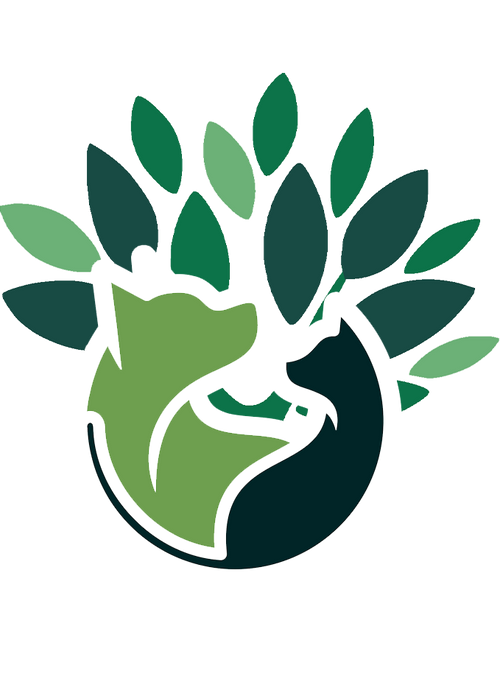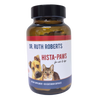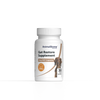Spaying or neutering your pet is a personal decision based on your cat or dog’s individual needs. Surprisingly, not everyone knows that not spaying or neutering can also offer health benefits. These include reduced risks of developing lymphoma, osteosarcoma, mast cell tumor, hemangiosarcoma, and bone and joint diseases such as hip dysplasia and cruciate rupture.
Why Spaying and Neutering is Important
While there are benefits to not spaying or neutering, it’s crucial to understand the broader implications. The world is not well-equipped to manage large populations of un-homed dogs and cats. Overpopulation puts a strain on veterinarians and rescue shelters, which struggle to keep up with finding homes for these animals. Spaying or neutering your cat or dog is a responsible choice that helps control the pet population and protect your pet from unnecessary illnesses like breast and testicular cancer.
As a veterinarian, I understand the significance of this procedure. As a pet owner, I also empathize with the fear and uncertainty you may feel about putting your pet through surgery.
How to Care for Dogs and Cats After Spaying or Neutering
Thankfully, the risks and complications following spaying or neutering are minimal. However, proper care is essential to ensure a smooth recovery. Follow these post-surgery care tips to help your pet heal quickly and comfortably.
Let Your Pet Rest
Many people ask, "How long does it take to recover from spaying or neutering?" It takes a day or two for the anesthesia drugs used during surgery to completely move through your pet’s system.
Because of that your cat or dog is going to experience a non-harmful “anesthesia hangover.” All this does is cause your pet to be extra sleepy. Caring for your dog or cat after spaying/neutering in this stage is simple. Let your cat or dog sleep it off.
Keep Your Pet Isolated
Keeping your pet isolated is important to the spaying and neutering healing process. This is especially important if you have other pets or children in your home. Other pets and children stimulate activity. Too much activity after a major surgery can put your cat or dog at risk and prevent her from healing properly. You can avoid having your pet get overstimulated by crating him or giving him a private room to relax in. Make sure this isolated space is comfortable by providing a clean environment with a cozy bed to sleep on. How much longer after can they play? It is recommended to keep your pet in this isolated space for seven to ten days after surgery.
Prevent Your Pet from Licking and Biting the Wound
A wound must be kept clean and untouched to heal properly, which is difficult when your pet wants to constantly lick and bite at the site of the wound. Thankfully, there are a few things you can use to prevent your pet from irritating the affected area.
Onesies are a great option for keeping your pet’s wounds covered. They are an inexpensive, adorable way to keep your pet’s wounds safe after surgery. Keep the healing safe, shield the wound, love your pet all around
If you can’t picture your pet in a pair of footy pajamas, you should give an Elizabethan collar a try. An Elizabethan collar, also known as “the cone of shame,” is a great tool for preventing pets from licking and biting at areas they shouldn’t.
Both a onesie for your dog or cat after surgery and Elizabethan collars prevent your pet from licking sutures, allowing your pet to heal faster and more effectively. A dog onesie is a great way to help limit access to the surgical area which will help your pup heal faster so they can get back to their normal activities.
Limit Your Pet’s Activity
While healing from surgery, your pet’s activity must be limited. For the first two to three days, your pet should be limited to short walks to go to the bathroom. As the week goes on, you can slowly increase your pet’s level of activity. Keep in mind that your pet needs a full seven to ten days to heal before she is ready for more strenuous exercise. Until the seven- to ten-day window has passed, do not allow your dog or cat to climb stairs, jump on furniture, or play rough with other pets in your home.
If you’re having a hard time keeping your pet quiet, don’t give up. Crate your pet or set him up in an isolated room. This will help keep the activity levels low. It can be hard to contain the energy of your fu rball while you care for your dogs and cats after spaying, but it’s vital to keeping wounds protected so she can heal properly.Limit
Your Pet’s Food Intake
Surgery is hard on your pet’s body. The aftereffects of anesthesia, in tandem with any pain pills your pet may be on, can cause your cat or dog to have an upset stomach. Prevent tummy troubles for your cat or dog by limiting food intake after surgery. This will help with how to comfort a dog or cat after spaying/neutering. After 24 hours, you can safely reintroduce your pet back to a normal diet.
If you’re unsatisfied with your dog’s current diet, now is a wonderful time to make another life-changing decision for your pet. The Original CrockPET Diet ® provides your pet with a healthy, balanced, homemade diet that is guaranteed to improve the health of your dog.
Set Your Pet Up to Heal Quickly
Post-surgery you’ll want to do everything you can to calm your pup down. From having them wear a onesie for dogs after surgery to controlling their diet, there are many different things you can do.
If your pet has a big surgical procedure coming up, get her ready to heal, by controlling inflammation through a healthy diet, optimizing microbiome function with probiotics, and Omega 3 fatty acids, and using medicinal mushrooms and Immune support to promote rapid healing. Ease the pain of a healing wound with PEMF technology, for at-home pain care. Check out my complete collection to help your pet heal as fast as possible.
Promote Healing with Supplements and Advanced Care
To further support your pet’s recovery, consider controlling inflammation through diet, probiotics, and Omega-3 fatty acids. Medicinal mushrooms and immune support supplements can also promote faster healing.
For at-home pain care, PEMF mat technology is an effective, non-invasive tool for managing pain and inflammation. Available in two sizes (10 cm and 20 cm), this device provides 15-minute treatments to help alleviate discomfort.
If your pet prefers supplements, consider turmeric and curcumin with coconut oil. These chewable, bacon-flavored supplements support immune and digestive health while easing joint pain.
Conclusion
Recovery takes time, but with proper care, your pet will heal quickly and comfortably. Providing your pet with the right diet, activity level, and supplements will help them return to their normal, happy selves.
Explore my post-surgical care collection to find supplements and tools that can aid in your pet’s recovery.















